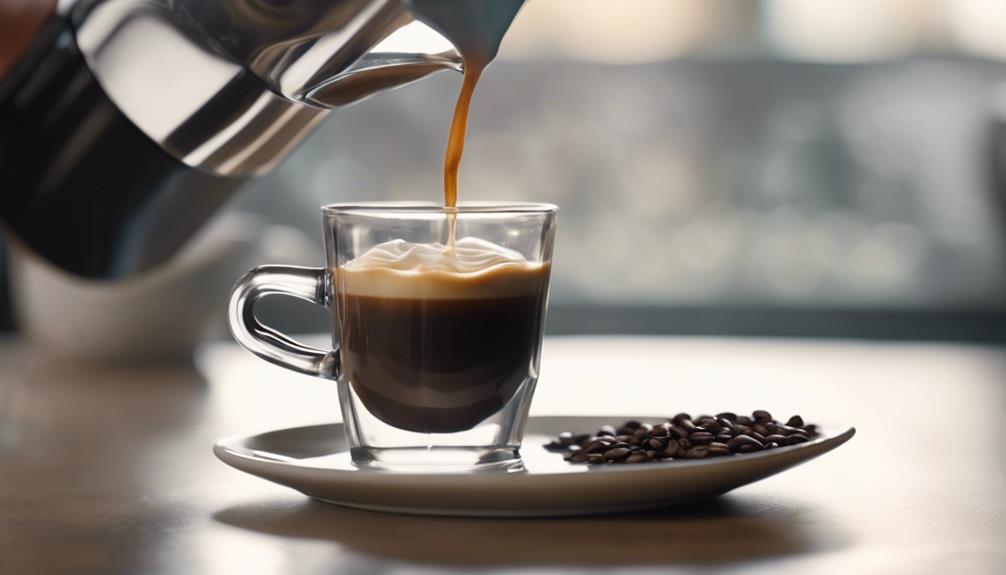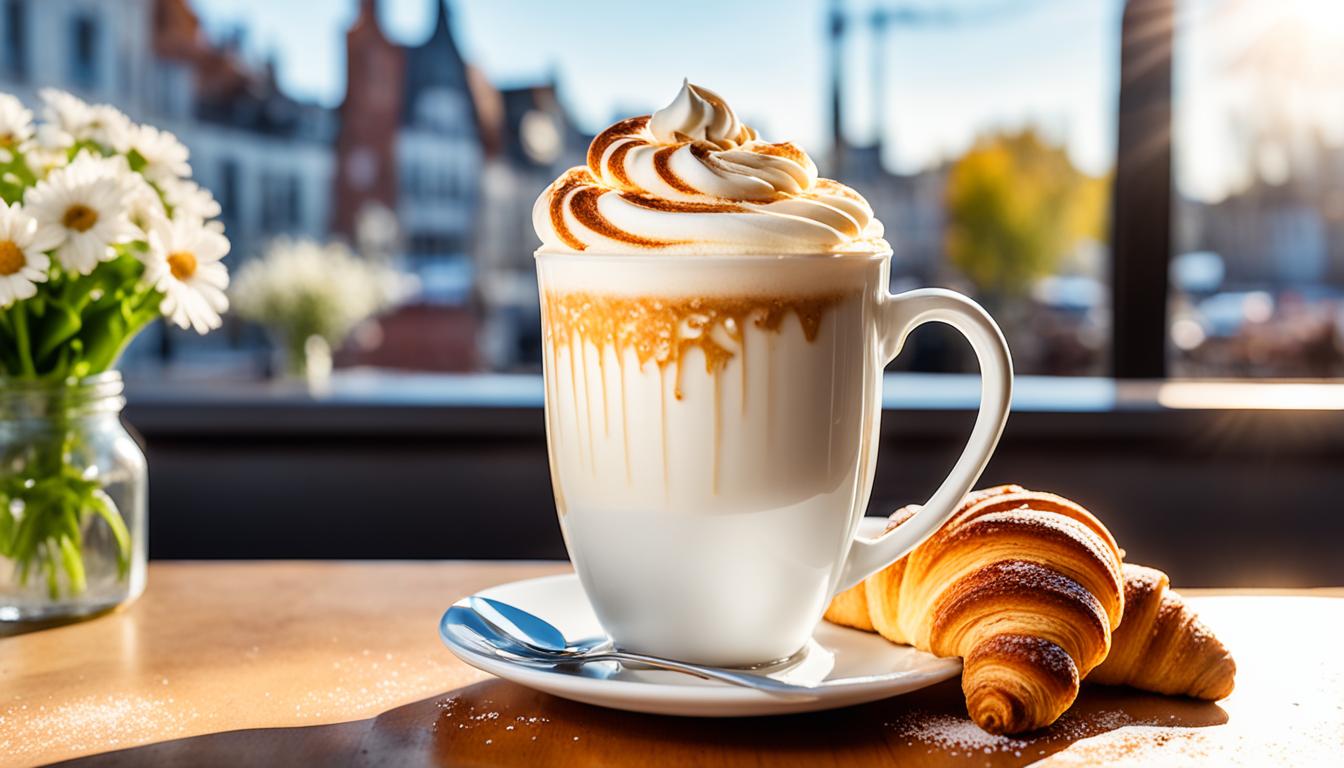Discovering coffee flavors and aromas involves understanding how factors like origin, processing methods, and roast level shape your experience. The aroma you notice influences how you perceive taste, with fruity, floral, nutty, or smoky notes adding depth. Sensory analysis uses tools like flavor wheels to help you identify subtle hints and appreciate the complexity. By exploring these elements, you’ll gain a richer appreciation of coffee’s unique nuances and how each cup tells its own story.
Key Takeaways
- Coffee flavors and aromas are shaped by bean variety, origin, processing methods, and roast level.
- Aroma plays a crucial role in flavor perception, with descriptors like fruity, floral, nutty, and smoky.
- Sensory analysis uses tools like the coffee flavor wheel to identify and articulate taste and aroma notes.
- Roast level and origin influence the balance of flavors, from floral and fruity in light roasts to smoky and nutty in dark roasts.
- Freshly brewed coffee’s aroma enhances overall enjoyment and provides vital cues about coffee quality.

Coffee flavors and aromas shape your overall experience with each cup, and understanding what influences them can enhance your appreciation. When you sip your coffee, you’re not just tasting a single flavor—you’re experiencing a complex interplay of aroma, flavor profiles, and sensory cues. These elements are largely determined by factors such as bean variety, origin, processing methods, and roast level. Recognizing how each contributes helps you better understand and enjoy the nuances in every brew.
Coffee flavors and aromas are shaped by bean variety, origin, processing, and roast level.
The aroma of coffee plays an essential role in your sensory experience. It’s detected through your olfactory system, and it sets the stage for how you perceive flavor. You’ll notice aroma descriptors like fruity, floral, nutty, smoky, or herbal, which are part of the rich vocabulary used to describe coffee’s scent. These descriptors help you identify specific flavor notes, which are essential to appreciating the depth of your coffee.
For example, a fruity aroma might hint at berry notes, while a floral scent could suggest jasmine or jasmine-like qualities. The aroma and flavor are interconnected—what you smell often enhances what you taste, making the overall experience more vivid.
Understanding flavor profiles involves more than just identifying tastes; it’s about sensory analysis. Tools like the coffee flavor wheel aid in this process by providing a visual guide to identify and communicate specific aroma and flavor notes. Using the flavor wheel, you can pinpoint whether a coffee has hints of caramel, spice, citrus, or other subtle nuances.
This systematic approach allows you to better articulate your impressions and deepen your appreciation for different coffees.
Processing methods and origin markedly influence these flavor profiles. Was the coffee washed or natural processed? Was it grown at high altitude or in a tropical climate? These details shape the unique flavor notes and aroma descriptors of each coffee.
Additionally, the roast level plays a crucial role—light roasts tend to preserve the bean’s origin character and highlight floral and fruity notes, while darker roasts often bring out smoky or nutty flavors.
Freshly brewed coffee’s aroma is particularly important, as it triggers your initial perception and greatly impacts your overall enjoyment. Moreover, vetted sources and expert insights can help you better understand the science behind these flavor and aroma developments, enriching your coffee experience.
Frequently Asked Questions
What Are the Aroma Flavors of Coffee?
You’re asking about coffee’s aroma flavors, which are quite diverse. When you smell coffee, you notice notes like floral, fruity, nutty, smoky, and herbal. These aromas come from chemical compounds released during brewing and are influenced by the bean’s origin and roasting process.
Recognizing these scents helps you understand the flavor profile better, making your coffee experience richer and more enjoyable.
How Do You Describe the Aroma of Coffee?
When describing the aroma of coffee, you focus on the scents you detect first, like floral, fruity, nutty, smoky, or earthy notes. Use specific words such as jasmine, caramel, cedar, or citrus to paint a clear picture. Trust your nose and take your time.
The Coffee Aroma Wheel can help you identify and articulate these aromas. Remember, factors like origin and roasting influence what you smell.
What Are the 4 Coffee Flavor Profiles?
You might wonder about the four main coffee flavor profiles. They include fruity, with notes of berries and citrus; floral, featuring jasmine, lavender, and rose aromas; nutty, which offers almond and hazelnut tastes; and chocolaty, ranging from milk to dark chocolate flavors.
Each profile reflects different regions and roast levels, giving you a diverse tasting experience that highlights coffee’s rich complexity.
How Do You Describe Coffee Flavors?
When describing coffee flavors, you focus on what you taste and smell during tasting. Use descriptive words like fruity, floral, nutty, or chocolaty to capture the natural notes you perceive.
Trust your senses and practice regularly to recognize subtle nuances. Remember, your descriptions might differ from others, so stay open-minded and compare different coffees to improve your ability to identify and articulate unique flavor profiles confidently.
Conclusion
Now that you’ve explored the world of coffee flavors and aromas, you’re better equipped to appreciate each sip. Remember, every coffee offers unique scents and tastes that can enhance your experience. Take the time to notice the subtle differences and experiment with different brewing methods. With this newfound knowledge, you’ll enjoy your coffee even more, discovering new favorites along the way. Cheers to your journey into the rich and aromatic world of coffee!








